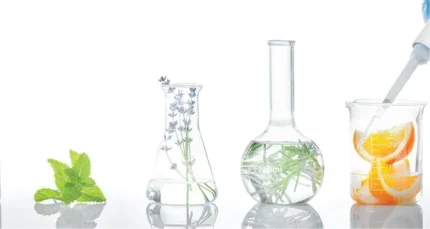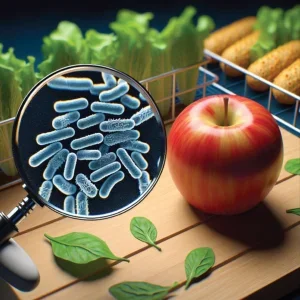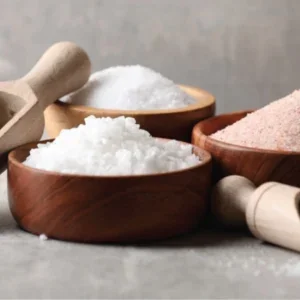
CO2 has had a lot of bad press. Often referred to within the context of global warming, the gas occurs naturally in the environment and does have positive applications, such as carbonating soda water and beer, for example. One of its more innovative uses is extracting bioactive compounds from plant-based materials, from polyphenols to antioxidants. Many functional food and drink manufacturers have been looking into supercritical CO2 extraction to meet the growing demand for powerful, pure and ‘natural’ ingredients. First used commercially to decaffeinate coffee in the 1970s, supercritical CO2 extraction evolved to make pharmaceuticals, essential oils and natural flavourings. The process can be so precise that the CBD industry uses it to separate high-purity cannabinoids from the plant’s stringently regulated psychotropic compound, THC.
As well as being precise, the process is cleaner than traditional compound extraction methods, which employ chemical solvents such as hexane and ethanol. These petrol-derived substances can leave toxic residues in the end product, which can be detrimental to human health. As a naturally occurring non-toxic gas, CO2 is an approved food-grade solvent, which makes it a safer option for extracting compounds destined for human ingestion or application to the skin.
“If you’re processing with petroleum-based solvents, they will leave a residue. CO2 is a gas, not a solvent, which means your products will meet USDA [United States Department of Agriculture dietary] guidelines,” explains Hans Schonemann, chief technology officer for Phasex, a US-based supercritical CO2 extraction company focusing on natural products, biopharmaceuticals and polymers.

Best of both forms
In its supercritical state, CO2 acts like both a gas and a liquid. This means it can be used as a solvent to selectively extract desired compounds from materials. The supercritical state is achieved by precisely controlling the temperature and pressure to a point at which CO2’s liquid and vapour phases become identical. The low critical temperature and pressure required to work with CO2 preserves the nature of heat-sensitive compounds such as plantderived flavours, which can be extracted with minimal alteration to their natural state. In contrast, the levels of heat required for traditional solvent-based methods can alter the nature of the aromatic compounds found in herbs, spices and fruit. Italy-based supercritical fluid technologist Separeco receives a lot of client requests to use supercritical CO2 extraction to source flavouring agents and aromas – such as vanillin from the vanilla bean. But the method also works well with texturisers and preservatives, according to the company’s R&D specialist Riccardo Destefano.
“Every request is different and requires an adjustment to the process depending on the volatility of the compounds being extracted,” explains Destefano. “It’s so easy to get oil with great value and aroma from vanilla beans, but other compounds are more volatile, so the process needs to be adjusted accordingly. Extracting Rosemary, for example, is a completely different process from vanillin so the behaviour of the CO2 needs to be different, and the nature of the end product will be different.”
Working with CO2 also delivers purer, higher yields than traditional solvents. “The pressuredependent dissolving power of supercritical fluids can allow the user to selectively remove impurities, purify and concentrate actives, and clean substrates to levels not seen with traditional solvent extraction,” says Schonemann.
Flexibility and productivity
CO2 extraction is flexible enough to work with small molecules, volatile molecules, aromatic extracts associated with flavour, fragrance and lipophilic (fat-soluble compounds). The high-diffusivity and non-existent surface tension of supercritical fluids create an extraction process that penetrates microporous structures previously not possible with industrial solvents, explains Schonemann.
“You can regulate the pressure according to the required result. For example, it can be more finely tuned when you want to target specific compounds and it can be used fractionate particular actives. But if you’re just looking for one holistic extract it also works for that. Both approaches have their advantages,” he continues. Destefano emphasises the process’s ability to enhance the nutritional value, flavour and potency of a product by fine-tuning the extraction to source a pool of different compounds. “The synergic effect of different compounds can enhance the absorption of certain vitamins. Traditional extraction with solvents could lead to some chemical modification of the compound, which can impact the absorption level,” he explains.
As well as producing a more powerful and pure extract, the nature of the process itself is more environmentally responsible because the CO2 used for extraction is typically captured as a by-product from the food or beverage sector, rather than the oil industry. Moreover, around 95% of the CO2 can be captured and reused at the end of the process, and it doesn’t generate hazardous waste.
“I’ve been in a lot of solvent extraction facilities, and I’ve seen the mass produced by extracting with hexane,” says Schonemann. “It’s a flammable solvent so it needs to be treated before going to landfill. When you process with CO2 it’s non-hazardous and the economics of this have to be taken into consideration.”
Sending waste to landfill is becoming increasingly regulated so working with CO2 rather than solvents can help manufacturers meet industry’s environmental guidelines and targets, as well as saving money on treatment-to-landfill processes.
Furthermore, the technique can be applied to valorise waste by extracting high-value ingredients from the by-products of food processing, such as polyphenols and antioxidants from vegetable water and lycopene from tomato skins. With industry under increasing pressure to reduce waste, food waste valorisation is becoming a hot topic.
“Certain types of vegetable waste are now seen as source material, so instead of paying to dispose of waste, you’ll end up with a first-stage raw material that can be valorised – perhaps as a source of fibre and valuable compounds. For example, some polymers can be obtained from vegetable waste using supercritical CO2,” says Destefano.
Innovation in new diets
Further CO2-related innovation is happening in the area of protein substitutes. As consumers shift away from meat-based diets, food manufacturers are investigating alternative sources of protein. One focus of recent studies has been the functional plant protein, lupin – a legume related to peanut and soybean. Lupin has a high protein (~40%) and fibre (~40%) content, is low in starch and is gluten free. Despite this functionality, it is currently underutilised by the food industry and it doesn’t currently play a major role in the human diet.
Researchers have also been looking into concentrating its protein to produce lupin protein isolate (LPI), which would be an attractive high-protein functional ingredient for the food manufacturing industry. Recent investigations include a study into how supercritical CO2 can be used to improve the purity of LPI, by Ruben Dominguez-Valencia at the Centro Tecnológico de la Carne de Galicia in Spain. The research found that the supercritical CO2 process increased the purity of LPI, while reducing the oil and other compounds such as saponins, which can impact LPI’s techno-functional properties. The treatment also eliminated lipid fraction and lipophilic pigments – which modify colour – so the result was a more neutral ingredient that could be included in food and drink processing. One of the more innovative client requests Separeco has received is to use supercritical CO2 extraction to remove fat from insect powder to obtain a protein-rich environmentally friendly meat substitute. “It might not be nice to think about, but insects are a very rich source of protein, and the process is very well established,” says Destefano. “Being able to extract the oil and fat from the insect powder produces a much purer protein in a nice powder, which can be used to make products such as pasta or fake steak.”
Of course, all this innovation comes at a price and the optimisation of extraction parameters to work with different types of materials and compounds requires expertise. This could be a barrier for manufacturers who want to take the process in-house. “This method involves complex thermodynamics so it’s easy to make mistakes,” says Stefano. “But automating processes can boost effectiveness and enhance productivity by using more cycles to decrease the cost.”
Bringing processes in-house requires initial investment in specialised equipment, which can be a barrier for smaller manufacturers. “The first step is to assess the scale of the production system and understand how the cost will impact production. In general, having bigger systems will reduce the cost but there are exceptions. Some customers producing perfumes, for example, can afford a smaller scale of production. But the food industry probably needs to work on a big scale to make it economically viable,” says Destefano.
Schonemann highlighted the fact that many manufacturers will have an existing infrastructure up and running that is designed for large-scale extraction with traditional solvents. “If you have a facility already running, why change it? However, if you’re bringing on a new facility there’s a possibility to create a CO2 extraction plant rather than recreating a 1950s-style plant.”

The low price of CO2 as a raw material, compared with solvents, is another benefit. “It’s cheaper to purchase than hexane or ethanol and, if you put the right engineering controls in place, it can be repurposed,” says Schonemann. “So, if you remove the cost of equipment and depreciation, the operating costs is as little as solvent extraction or less.”
Unsurprisingly, Stefano believes the processes’ advantages over traditional techniques are so great they make investment worthwhile. And he says more costeffective extraction systems are being developed for the future. This could be a sign of the way the industry is moving and pressure from consumers and regulators could eventually force manufacturers to adapt. “As regulation become stricter on the level of natural extracts permitted in our products and the consumer becomes more educated, the market will continue to move away from solvent extraction and demand CO2 extraction,” predicts Schonemann.






